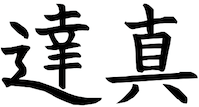half-baked musings on the themes of individualism and collectivism, their strengths and weaknesses, and the possibility of a culture synthesizing them
Over the years, I’ve become very interested in the theme of individualism and collectivism, the polarity between them, and how they play out in communities and cultures that I am connected to.
I grew up in Massachusetts in the 1990’s / early 2000’s. I went to college in Maryland. I spent the majority of my childhood in the United States. By and large, I would describe the culture I grew up in as individualistic.
I mostly came to understand this by contrast, when I was exposed to more collectivist or communal settings.
The first setting I would call collectivist that I was exposed to was when I worked for a summer in a farm group as a twenty year old. The group, Many Hands Farm Corps, was designed to give young people opportunities to work on farms in Western Massachusetts. We lived together in a house, cooked meals and ate together, and worked together at a number of part time agricultural jobs. We spent most of our time together, thought and acted and worked and lived as a group.
The next major collectivist context that I participated in was in monastic training. I first did a brief retreat at a monastery in Thailand. Later, I trained at what is now called the Monastic Academy (MAPLE) in Vermont for nearly five years in two stints.
MAPLE has a difficult task: create a contemplative training institution in contemporary Western culture. They have run into many difficulties over the years. When I look back on many of the things that I found hard there, or that others criticize about that project, I see a common root cause across the themes and challenges they face: they are importing a collectivist institution from a collectivist culture into an individualistic culture.
A monastery is like a flock of birds, a swarm of cattle. Monks rise, chant, meditate, cook, eat, clean, flow together. There is a schedule that commands Ur every day. U do what everyone does.
When decisions are made, the group’s needs are considered first and foremost. Individual needs are seen as part of the group’s needs, not separate from them or more important than them. U do not make decisions solely from Ur own desires or priorities.
Being in these contexts was invaluable for me in my twenties. It was an antidote I didn’t know I needed until I received it.
Eventually, though, I needed to leave monastic training. In large part, it was just time, time for me to move on, time for me to enter a new chapter of my life. But there were also specific causes and conditions, things that I was missing or needing. I realize now that one thing I was searching for in leaving monastic training was to reconnect to my individuality, my own needs and preferences.
In the year after I left, I did a lot of work on finding and honoring my boundaries. I also asked an inquiry question about my Vow—what is my vow? What am I here to do with my life? From the perspective of the themes in this essay: what is my essence that is my own?
A phrase that has been significant to me in recent years: “the Hegelian synthesis of Individualism and Collectivism.” Or, in a Buddhist frame: the Middle Way between Individualism and Collectivism.
I have seen clearly in my life how individualism and collectivism both have failings and flaws, are insufficient. And I have also seen how the antidote to one’s problems is not merely replacing it with the other. Merging with a collective is not a solution to selfishness and its consequences; individuation is not a replacement for the need for communitiy.
My current way of life, as a pilgrim wandering from place to place, staying with friends around the world, has been one way to explore this synthesis. I live in a kind of community of two or three or four when I stay with friends. But my stays are temporary, and I move from place to place, following my own life force and intuition. I have my own life that has its own continuitiy, not tied to a specific place or context.
Another example of this synthesis I’ve seen is the trend of having friends live near each other, in apartments or houses that are physically near each other but not merged with one another. The Fractal community in Brooklyn is an excellent example, although there are others.
Recently, I’ve been working to write a oath or pledge for members of The Service Guild, the organization that I am creating. These themes are very much at play in The Service Guild. How do we coordinate as a group of distinct individuals?
I wanted the Oath to reflect this tension. In the current draft that I have, there are three kinds of sentences or sections in it:
- portions that will be read by everyone in The Service Guild
- portions that will be read by members of its specific departments (Love, Curiosity, Empowerment)
- unique portions that will be written and read by one member alone (describing their vow)
A vow is where our own individual essence meets the rest of the world, the collective whole incarnated on this Earth at this time—it is the place where this being finds its unique path of service to all beings.
